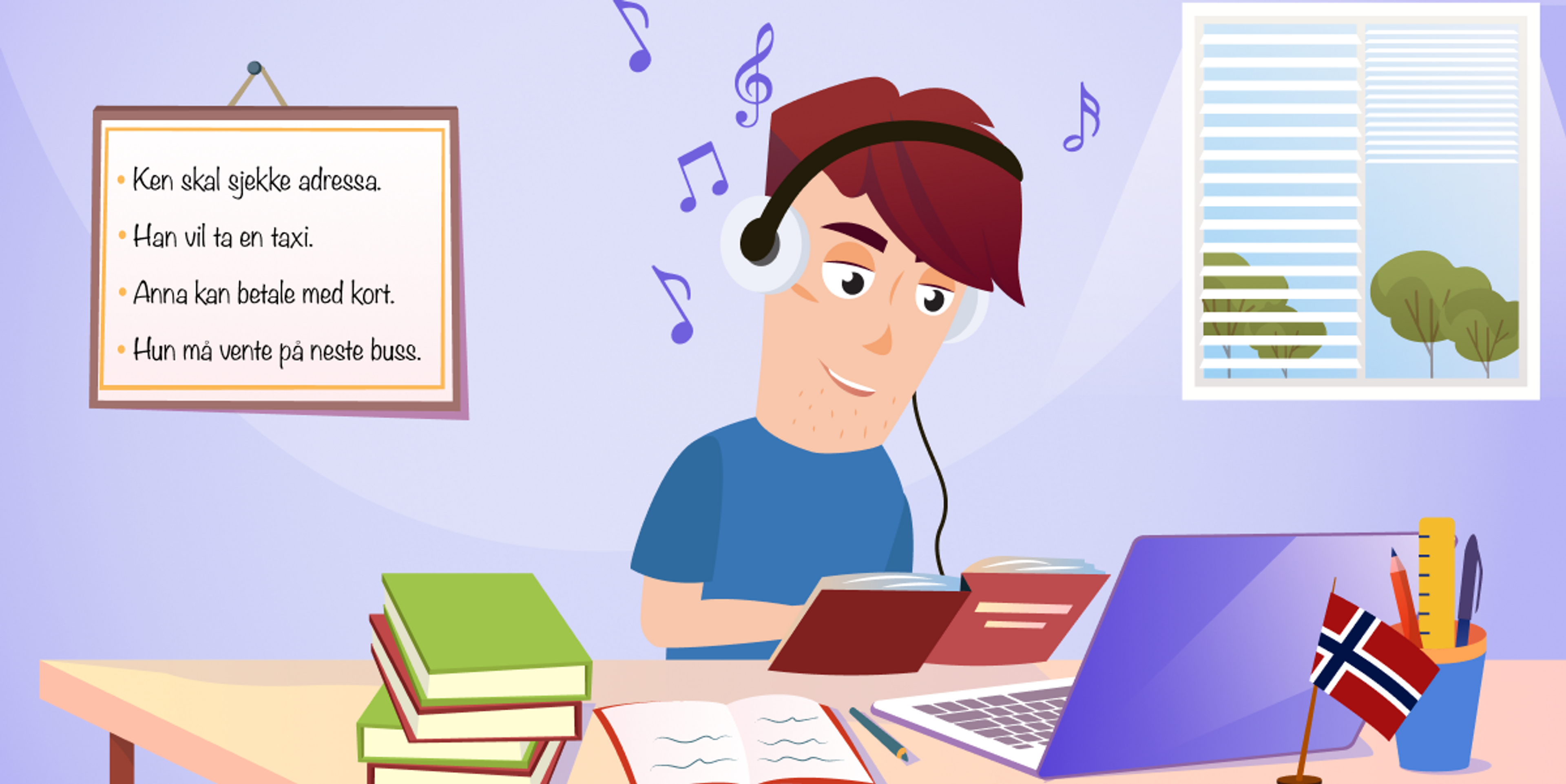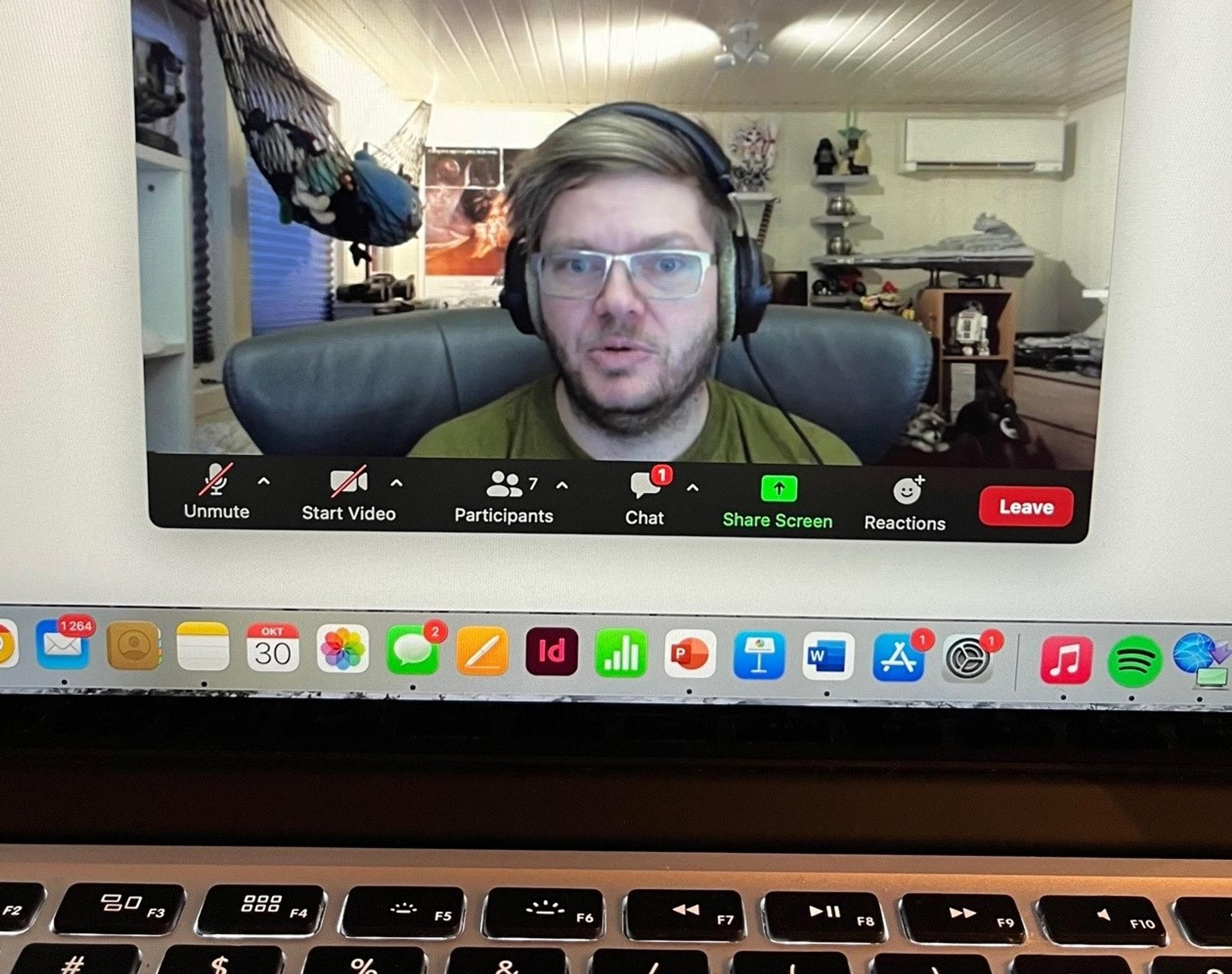Norwegian courses with a twinkle in the eye
Lunch & Afterwork are intensive, online Norwegian courses, which can be combined with work and family. In a short time, these courses have managed to become popular, and fill up quickly.

- Is everyone here? asks Norwegian teacher Ronny Sæthre and looks up at the participants in the Zoom session. He chats a bit with those who have logged in: - What did you do this weekend, Mikaela? - "Jeg har.. bakt..", she answers a little hesitantly. Together with five others, she will now spend an hour and a half in a digital classroom to increase her Norwegian skills.
Ronny brings up today's plan on the screen, and tells the class that it's the school system and leisure activities that are on today's program, in addition to a session on grammar.
He starts with a text from Lingu, which they listen to together. Afterward, one of the participants asks: - What do grades mean? Then the conversation begins. Ronny tells a little about the Norwegian school system and then challenges everyone to talk about the school system in their home countries. This is how they are trained to use Norwegian words and expressions.
Today's course participants come from Venezuela, the Czech Republic, the USA, and Great Britain. They all have full-time jobs, and some have children. A busy day-to-day schedule, in other words. They take the course to better master the Norwegian language so that they can more easily communicate with colleagues, customers, and family. Some of them have followed the Norwegian course at Folkeuniversitetet all the way from A1 level. Several also have ambitions for further education in Norway, and many Norwegian educations have language requirements. Especially when it comes to higher education.
Short intensive courses
Lunch & Afterwork is offered at B1 level, and consists of 24 hours of digital teaching in addition to self-study. In this way, this can be combined with both work and family. The teaching is active and communicative, and it is planned that the participants will gain a better knowledge of Norwegian cultural and social life. Homework is given between each session.
- The courses are well suited for people with a busy schedule. Not everyone has the time or capacity to join a course that lasts four hours, for example, so this short course is a good alternative. Since the courses are not that long, the focus is on oral activity in the lessons. We go through grammar and vocabulary relevant to the chapter we are working on, and then we spend most of the time talking and discussing. The participants do the written part on their own, and I, as a teacher, can check and give feedback on the texts that they submit. When it comes to grammar tasks, for example, the participants are told whether they have done it right or wrong right away in Lingu, Ronny explains.
Game-based learning resource
The digital learning work "Samaneh's Journey" from Lingu is used as a learning resource. This is a game-based, digital learning resource for adults, with native language support. The curriculum includes text, audio recordings, and videos so that you can practice reading and pronouncing words.
- Lingu is an intuitive and engaging educational work. Many different topics are covered here, where the participants gain more knowledge about vocabulary, grammar, and how to use the language both orally and in writing. The grammar is explained in a neat and structured way, which I appreciate, says Ronny. - There are also several types of tasks in each chapter, where the participants can practice and repeat what they have gone through. As an additional motivational factor, you also get points for correct answers to the tasks, with a leaderboard where you can compare your results with other participants. It turns into a kind of game. And I think it's important to have fun with language!
Dedicated Norwegian Teacher Ronny Sæthre has been involved in teaching Norwegian to adult immigrants since 2018.
"I love my job. When I started, I mostly worked with refugees from various countries in the Middle East who were in the introduction program, and immigrants from Asia. Here, many had either insufficient or no education from their home countries, but there were also people with higher education. For most in these groups, the goal was to learn Norwegian well enough to function in society and to find a job. In recent years, I have had participants mostly from Europe and other Western countries, but also quite a few from the Middle East and Asia. Some start learning Norwegian while still living in their home country, while others have been in Norway for a period. The motivation to speak Norwegian is mainly due to family, work, or studies."

On the other side...
Back in today's course, they have now discussed leisure activities and what they did as children. This triggers smiles and laughter. And several have things in common. Finally, there are discussion tasks: Pros and cons of school uniforms? What should a good school be like? What can we do about bullying? The concept of bullying is unfamiliar, and Ronny simplifies it by talking about well-being. It helps.
– I emphasize oral activities according to the students' wishes. This is often where practice and repetition are needed," says the Norwegian teacher.
His best tips for learning Norwegian, aside from taking Norwegian courses, are to get to know Norwegians and speak with them. In Norwegian! "Many people who move to Norway may have a Norwegian partner or Norwegian friends. They are a very important resource. But many Norwegians are relatively good in English, and you may be tempted to take the 'easy' route and communicate in English. You should not do that; speak as much Norwegian as possible instead," encourages Ronny Sæthre.
Text: Hilde Aas Rønningen Illustrasjon: Lingu